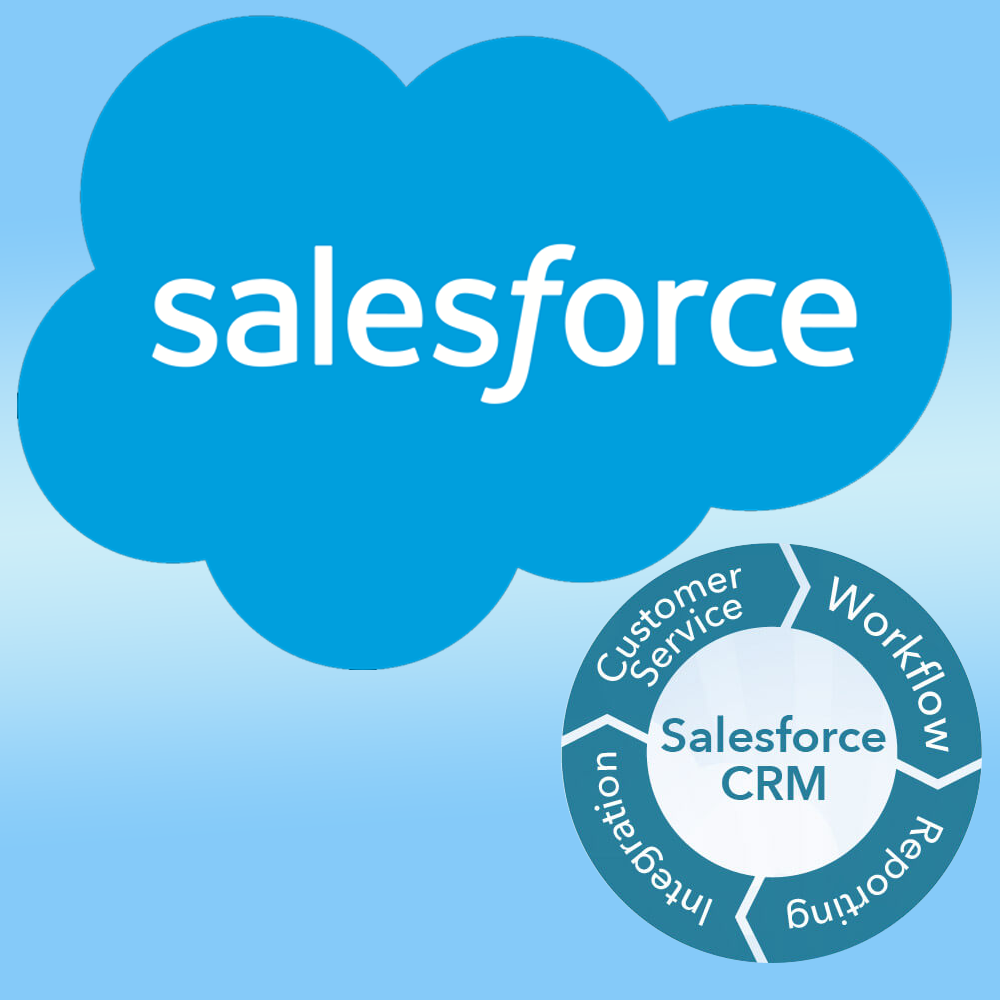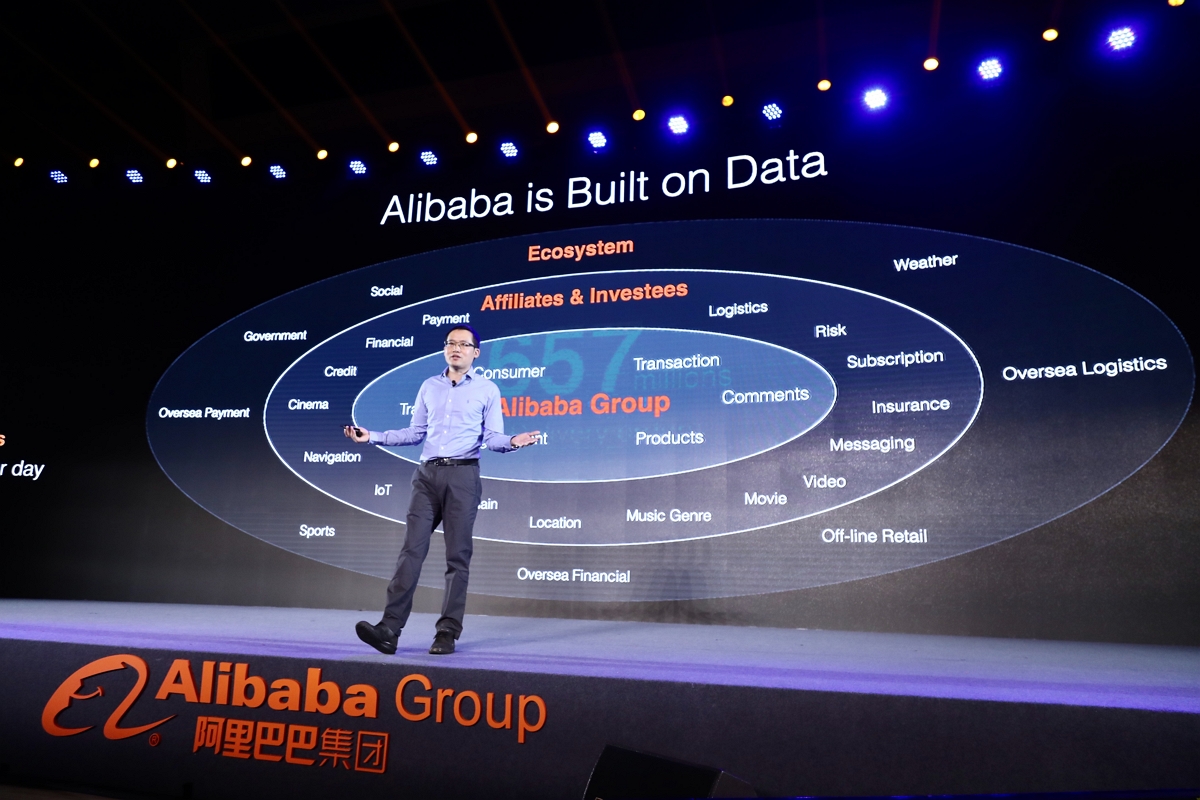Marketing Execution
Feb 16, 2024
By Ari Manor , CEO at ZOOZ

This is one in a series of articles that provide detailed and updated information about Marketing. In this specific article, which focuses on Marketing Execution, you can read about:
- Marketing Operations
- Marketing Platforms
- Marketing Automation
- Marketing with AI
- Will Marketing be Replaced by AI
- Marketing and Sales
- How Do You Sell a Product?
- Business Development (Biz Dev)
For additional articles about Marketing, see the Topic Menu.

Marketing Operations
Marketing operations refer to the processes, technology, and strategies that enable marketing teams to operate efficiently and scale their efforts effectively. It encompasses planning, execution, and measurement of marketing activities, with a focus on optimizing resources, workflows, and performance analytics to achieve business objectives.
Here’s an overview of key components and best practices in marketing operations:
- Strategic Planning: Develop a comprehensive marketing strategy that aligns with the business goals, including target markets, positioning, and key messaging. Strategic planning sets the direction for all marketing activities.
- Process Optimization: Streamline marketing processes to improve efficiency and productivity. This includes automating repetitive tasks, establishing clear workflows, and reducing bottlenecks.
 Case Study: Patagonia’s Activism-Integrated Marketing
Case Study: Patagonia’s Activism-Integrated Marketing- Company: Patagonia, United States (Founded in 1973)
- What Was Done: Patagonia streamlined its marketing operations to fully integrate its environmental activism. This included launching campaigns focused on conservation efforts, embedding sustainability in every marketing message, and utilizing social media platforms to engage consumers in environmental advocacy.
- Results/Impact: Patagonia’s marketing operations not only reinforced its brand identity as an activist company but also deepened customer loyalty and attracted a broad audience passionate about conservation. Their approach has been pivotal in establishing Patagonia as a leader in corporate responsibility.
- Technology and Tools: Leverage marketing technology (MarTech) stack to automate and enhance marketing tasks. This includes CRM systems, email marketing platforms, analytics tools, content management systems, and social media management tools.
 Case Study: Salesforce's Operational Excellence
Case Study: Salesforce's Operational Excellence- Company: Salesforce, United States (Founded in 1999)
- What Was Done: Salesforce invested heavily in marketing operations technology, particularly in the integration of their own CRM and marketing automation tools. This enabled a seamless flow of information across sales and marketing teams, facilitating personalized customer journeys and more effective lead management.
- Results/Impact: The integration of Salesforce’s marketing and sales operations not only improved internal efficiencies but also enhanced customer satisfaction through personalized interactions. This operational excellence contributed to Salesforce’s sustained growth, maintaining its position as a leader in CRM solutions globally.
- Data Management: Implement systems for collecting, organizing, and analyzing marketing data. Effective data management ensures that decisions are based on accurate and timely information.
 Case Study: Quip’s Operational Agility
Case Study: Quip’s Operational Agility- Company: Quip, United States (Founded in 2012)
- What Was Done: Quip, a dental care startup, focused on streamlining its marketing operations to support rapid scaling. This included automating customer communication, leveraging data analytics for targeted campaigns, and integrating operations with sales channels for a unified customer experience.
- Results/Impact: Quip’s focus on operational efficiency allowed it to quickly adapt to market changes and customer feedback, fueling its growth. By 2019, Quip had served over one million customers and successfully expanded its product line, demonstrating the effectiveness of its marketing operations strategy.
- Performance Measurement: Define key performance indicators (KPIs) and use analytics to measure the effectiveness of marketing campaigns. Continuous measurement allows for data-driven decision-making and optimization of marketing efforts.
 Case Study:
Case Study:
Wild Me’s Conservation Through Data- Company: Wild Me, United States (Nonprofit Founded in 2015)
- What Was Done: Wild Me, a wildlife conservation tech nonprofit, optimized its marketing operations by leveraging data analytics to track and report the impact of its conservation efforts. They used digital tools to automate the collection of wildlife sightings and engage the public through citizen science initiatives.
- Results/Impact: By integrating marketing operations with their tech platform, Wild Me efficiently communicated the real-time impact of conservation efforts to its supporters, significantly increasing engagement and donations. Their approach demonstrated the power of data in nonprofit marketing to drive community involvement and support.
- Team Collaboration and Communication: Foster a collaborative environment among marketing team members and between marketing and other departments. Clear communication ensures everyone is aligned and working towards common goals.
- Budget Management: Carefully manage the marketing budget to ensure resources are allocated effectively across various channels and initiatives. Track spending and ROI to ensure marketing efforts are cost-effective.
- Compliance and Governance: Ensure all marketing activities comply with legal regulations and company policies. This includes data privacy laws, copyright considerations, and brand guidelines.
- Vendor and Agency Management: Manage relationships with external vendors and agencies that support marketing efforts. Ensure they understand your brand and strategic goals (use a MarCom brief to assure brand consistency), and hold them accountable for their performance.
- Talent Development: Invest in the professional development of the marketing team. Stay up-to-date with the latest marketing trends, technologies, and best practices to maintain a competitive edge.
- Change Management: Be prepared to adapt marketing operations in response to changing market conditions, consumer behaviors, and technological advancements. Flexibility and agility are key to staying relevant.
- Customer Experience Focus: Align marketing operations with the goal of enhancing customer experience across all touchpoints. Consistent, personalized interactions build customer loyalty and advocacy.
Marketing operations is the backbone of a successful marketing department, providing the structure and resources needed to execute strategies effectively. By focusing on efficiency, technology, and data-driven insights, businesses can optimize their marketing efforts to drive growth and achieve a competitive advantage.

Marketing Platforms
Marketing platforms are comprehensive tools and technologies that support and streamline various marketing activities across multiple channels. They offer businesses the ability to create, manage, execute, and measure marketing campaigns from a centralized interface, enhancing efficiency and effectiveness.
 Case Study:
Case Study:
ReMarkable’s Content Creator Collaboration
- Company: ReMarkable, Norway (Founded in 2013)
- What Was Done: ReMarkable, the maker of a paper-like digital tablet, leveraged platforms like YouTube by partnering with content creators who focus on productivity and technology. These collaborations included detailed reviews, unboxings, and productivity tips using the ReMarkable tablet.
- Results/Impact: This approach helped ReMarkable reach a wider, tech-savvy audience, driving interest and sales through authentic content. The strategy boosted the brand's visibility in a crowded tech market and highlighted the unique selling points of their tablet to potential customers.
Here's an overview of key features and benefits of marketing platforms:
- Campaign Management: Allows for the creation, execution, and management of marketing campaigns across different channels, including email, social media, digital advertising, and more. Examples of these platforms include:
- HubSpot: Offers comprehensive campaign management across multiple channels, integrating with CRM, email, social media, and content management.
- Marketo: Specialized in automating and managing marketing campaigns and workflows, particularly for medium to large businesses.
- Salesforce Pardot: Designed for B2B marketing, providing tools for campaign management and automation.
- HubSpot: Offers comprehensive campaign management across multiple channels, integrating with CRM, email, social media, and content management.
- Customer Relationship Management (CRM): Integrates CRM functionalities to manage customer data, interactions, and history, enabling personalized marketing efforts and improved customer experiences. Examples of these platforms include:
- Salesforce CRM: A widely used CRM platform that offers extensive customer management functionalities, integration with marketing and sales.
- Zoho CRM: Provides CRM solutions with a focus on sales process automation, customer engagement, and integration with social media.
- Microsoft Dynamics 365: A CRM and ERP platform that integrates with Microsoft products, offering solutions for sales, customer service, and marketing.
- Salesforce CRM: A widely used CRM platform that offers extensive customer management functionalities, integration with marketing and sales.
- Content Management: Provides tools for creating, storing, and managing digital content such as blog posts, videos, images, and landing pages, ensuring consistent and engaging content across all platforms. Examples of these platforms include:
- WordPress: A versatile content management system ideal for creating and managing websites and blogs (it was originally designed for blogs).
- Drupal: Offers robust content management features, suitable for complex websites and applications.
- Joomla: A comprehensible CMS that provides flexibility for building websites and online applications.
- Wix: A user-friendly CMS with drag-and-drop design, offering templates for businesses, freelancers, and personal projects. Includes blogging, e-commerce, and multimedia.
 Case Study: Scribbr’s Niche Academic Platform Engagement
Case Study: Scribbr’s Niche Academic Platform Engagement- Company: Scribbr, Netherlands (Founded in 2012)
- What Was Done: Scribbr, an academic editing and proofreading company, focused its marketing on niche platforms popular among students and academics, such as ResearchGate and Academia.edu. They tailored content to offer value in these communities, providing resources like plagiarism checkers, citation generators, and writing guides.
- Results/Impact: By engaging with their target audience on specialized platforms, Scribbr effectively increased its visibility and credibility among students and academics. This strategy contributed to a significant uptick in their service usage and established Scribbr as a trusted resource in the academic community.
- WordPress: A versatile content management system ideal for creating and managing websites and blogs (it was originally designed for blogs).
- Social Media Management: Offers capabilities for scheduling posts, monitoring social media conversations, and analyzing engagement across various social media platforms. Examples of these platforms include:
- Hootsuite: Allows scheduling and monitoring of posts across multiple social media platforms, with analytics to track engagement.
- Buffer: Focuses on scheduling posts, analyzing performance, and managing accounts in various social networks.
- Sprout Social: Offers deep social media management and analytics tools, including monitoring and engagement features.
 Case Study: Lo & Sons’ Smart Bag Buzz on Pinterest
Case Study: Lo & Sons’ Smart Bag Buzz on Pinterest- Company: Lo & Sons, United States (Founded in 2010)
- What Was Done: Lo & Sons, a small family-owned company specializing in stylish and functional bags, strategically used Pinterest as their primary marketing platform. They created visually appealing pins showcasing their bags in various lifestyles and travel scenarios, highlighting their versatility and style.
- Results/Impact: By leveraging Pinterest’s visual and aspirational nature, Lo & Sons tapped into a community eager for travel and fashion content, significantly increasing their online visibility and sales. This focus on Pinterest helped them grow from a niche startup into a recognized brand in the competitive accessory market.
- Hootsuite: Allows scheduling and monitoring of posts across multiple social media platforms, with analytics to track engagement.
- Email Marketing: Features tools for designing, sending, and tracking email campaigns, including segmentation, personalization, and automation capabilities. Examples of these platforms include:
- Mailchimp: Widely used for designing, sending, and analyzing email marketing campaigns, with automation features.
- Constant Contact: Provides email marketing tools with a focus on small businesses, including customizable templates and analytics.
- Sendinblue: Offers email marketing services with additional features like SMS marketing and automation workflows.
- Mailchimp: Widely used for designing, sending, and analyzing email marketing campaigns, with automation features.
- Analytics and Reporting: Delivers comprehensive analytics and reporting features to measure the performance of marketing campaigns, track ROI, and gain insights into customer behavior and preferences. Examples of these platforms include:
- Google Analytics: A powerful tool for tracking website performance, user behavior, and campaign effectiveness.
- Adobe Analytics: Offers detailed analytics for marketing and web performance, suited for large enterprises.
- Mixpanel: Specializes in user behavior analytics for websites and mobile apps, offering detailed insights and data visualization (e.g. - about the sales funnel, and Realtime visitors).
- Google Analytics: A powerful tool for tracking website performance, user behavior, and campaign effectiveness.
- Automation: Automates repetitive tasks and workflows, such as email marketing, social media posting, and lead nurturing campaigns, saving time and ensuring timely interactions with customers. Examples of these platforms include:
- Marketo: Known for its marketing automation capabilities, particularly in campaign management and lead nurturing.
- HubSpot: Provides an all-in-one marketing platform with strong automation features across email, social media, and content marketing.
- ActiveCampaign: Focuses on email marketing automation, CRM, and machine learning for predictive content.
- Marketo: Known for its marketing automation capabilities, particularly in campaign management and lead nurturing.
- Search Engine Optimization (SEO): Some platforms include tools for optimizing website content for search engines, improving visibility and organic search rankings. Examples of these platforms include:
- HubSpot: Provides a comprehensive set of tools for lead capture, scoring, and nurturing, with robust analytics to track the lead's journey.
- Marketo: A leader in lead management, offering detailed lead scoring, nurturing programs, and marketing automation features.
- Salesforce Pardot: Tailored for B2B marketing, it excels in lead management with advanced scoring, nurturing, and segmentation capabilities.
- HubSpot: Provides a comprehensive set of tools for lead capture, scoring, and nurturing, with robust analytics to track the lead's journey.
- Lead Management: Facilitates lead capture, scoring, and nurturing, helping businesses identify and follow up with potential customers through various stages of the buying journey. Examples of these platforms include:
- HubSpot: Provides a comprehensive set of tools for lead capture, scoring, and nurturing, with robust analytics to track the lead's journey.
- Marketo: A leader in lead management, offering detailed lead scoring, nurturing programs, and marketing automation features.
- Salesforce Pardot: Tailored for B2B marketing, it excels in lead management with advanced scoring, nurturing, and segmentation capabilities.
- HubSpot: Provides a comprehensive set of tools for lead capture, scoring, and nurturing, with robust analytics to track the lead's journey.
- Integration Capabilities: Offers integration with other business tools and systems, such as e-commerce platforms, payment gateways, and external CRMs, for a seamless marketing ecosystem. Examples of these platforms include:
- Zapier: Allows for easy integration between thousands of different business tools and systems, automating workflows across applications.
- MuleSoft (Anypoint Platform by Salesforce): Offers powerful integration capabilities for connecting apps, data, and devices anywhere, on-premises or in the cloud.
- Integromat: A visual integration platform that enables automated workflows to be built between apps and services, enhancing efficiency without the need for coding.
 Case Study: Grammarly’s Engaging YouTube Campaigns
Case Study: Grammarly’s Engaging YouTube Campaigns- Company: Grammarly, United States (Founded in 2009)
- What Was Done: Grammarly expanded its marketing strategy to include YouTube, creating engaging and informative videos that highlighted the benefits of its writing assistant tool. The videos ranged from humorous sketches to user testimonials and tutorials, designed to showcase how Grammarly improves communication.
- Results/Impact: Grammarly’s YouTube strategy effectively increased brand awareness and user engagement. The relatable content helped humanize the brand, resulting in increased downloads and subscriptions. Their success on YouTube has become a model for SaaS marketing, demonstrating the platform’s potential beyond entertainment.
- Zapier: Allows for easy integration between thousands of different business tools and systems, automating workflows across applications.
Choosing the right marketing platform depends on several factors, including specific marketing needs, budget, team size, and technical capabilities. The ideal platform should align with your marketing strategy, enhance your team's productivity, and provide actionable insights to continually optimize your marketing efforts.

Marketing Automation
Marketing automation refers to the use of software and technologies to automate repetitive marketing tasks and workflows, thereby increasing operational efficiency and personalizing customer experiences. It allows marketers to deliver targeted messages and campaigns to customers and prospects across multiple channels, such as email, social media, websites, and text messages, based on predefined criteria and customer behaviors.
Here’s how marketing automation can transform your marketing efforts:
- Efficient Campaign Management: Automate the execution of campaigns across various channels, ensuring consistent messaging and freeing up time for strategic planning and creative tasks.
 Case Study: Local Roots’ Automated Urban Farming Appeal
Case Study: Local Roots’ Automated Urban Farming Appeal- Company: Local Roots, United States (Founded in 2013)
- What Was Done: Local Roots farms leverage marketing automation to promote their urban farming solutions. They use automated email campaigns, social media posts, and targeted online advertising to educate potential customers on the benefits of sustainable farming and their innovative z.
- Results/Impact: By automating their marketing efforts, Local Roots effectively reached a wider audience, raised awareness about urban farming, and grew their customer base. Their successful use of marketing automation has supported the expansion of their TerraFarm units across the United States, showcasing the scalability of sustainable, local agriculture.
- Personalized Customer Experiences: Use customer data and behavior triggers to create personalized marketing messages and offers, significantly improving customer engagement and conversion rates.
 Case Study:
Case Study:
Duolingo’s Personalized Learning Paths- Company: Duolingo, United States (Founded in 2011)
- What Was Done: Duolingo employed marketing automation to personalize the learning experience for users. They utilized user data to send tailored email reminders, course suggestions, and progress updates, encouraging consistent app engagement.
- Results/Impact: This personalized approach to user engagement contributed significantly to Duolingo’s growth, with the platform surpassing 500 million downloads by 2021. The automation of personalized communications was key in retaining users and promoting daily language learning habits.
- Lead Nurturing: Automate lead nurturing processes to guide potential customers through the sales funnel with targeted content and communications, improving lead conversion.
- Segmentation: Automatically segment customers based on their behavior, preferences, and demographics, enabling more targeted and relevant marketing efforts.
- Email Marketing: Automate email campaigns, from welcome emails to abandoned cart reminders, based on customer actions or time triggers, increasing the effectiveness of email marketing.
- Social Media Management: Schedule and publish content across multiple social media platforms automatically and monitor social interactions to engage with your audience efficiently.
 Case Study: Echobox’s AI-Powered Publishing Precision
Case Study: Echobox’s AI-Powered Publishing Precision- Company: Echobox, United Kingdom (Founded in 2013)
- What Was Done: Echobox provides AI-driven social media management for publishers. They used marketing automation internally to demonstrate the capabilities of their platform, automating their own social media campaigns to optimize content delivery times and personalize audience engagement.
- Results/Impact: By using their own tool for marketing automation, Echobox not only improved their operational efficiency but also served as a live case study for potential clients. This led to increased client acquisition as they showcased real-world benefits of their AI-powered platform.
- Analytics and Reporting: Automatically track and analyze the performance of marketing campaigns across channels, providing insights into what works and what needs improvement.
- Customer Lifecycle Marketing: Implement automated workflows to engage customers at various stages of their lifecycle, from acquisition to loyalty, ensuring timely and relevant communications.
- Scalability: Marketing automation allows businesses to scale their marketing efforts without a proportional increase in resources or costs, supporting business growth.
- Compliance and Consistency: Ensure compliance with data protection regulations and maintain message consistency across all marketing channels and campaigns.
Common marketing automation platforms include HubSpot, Marketo, Salesforce Pardot, Eloqua, and Mailchimp. When selecting a marketing automation tool, consider factors such as integration capabilities with other tools, ease of use, scalability, and specific features that match your marketing needs.
Implementing marketing automation can significantly enhance the effectiveness of your marketing strategy, enabling more personalized, relevant, and timely interactions with your audience. However, it's important to maintain a balance between automation and human touch to ensure genuine customer relationships.

Marketing with AI
Marketing with AI (Artificial Intelligence) involves leveraging machine learning, natural language processing, and other AI technologies to enhance marketing efforts, personalize customer experiences, and improve decision-making processes. AI in marketing allows for more efficient data analysis, predictive modeling, and automated tasks, leading to higher productivity and more effective strategies.
Here's how AI is transforming the marketing landscape:
- Personalization at Scale: AI enables hyper-personalized content, product recommendations, and messaging tailored to individual customer preferences and behaviors, enhancing customer engagement and loyalty.
 Case Study:
Case Study:
Sephora’s Beauty Insider Personalization- Company: Sephora, France (Founded in 1969)
- What Was Done: Sephora, a leading beauty retailer, implemented marketing automation technologies to personalize the shopping experience for its Beauty Insider members. They used customer data to send personalized product recommendations, birthday gifts, and exclusive offers through email and their app.
- Results/Impact: Sephora’s personalized marketing efforts strengthened customer loyalty and increased sales. The Beauty Insider program’s use of automation to cater to individual preferences set a new standard in personalized retail, contributing significantly to Sephora’s status as a beloved and innovative beauty destination.
- Predictive Analytics: Utilizing AI for predictive analytics helps marketers forecast customer behaviors, purchasing patterns, and future trends, allowing for proactive strategy adjustments.
 Case Study:
Case Study:
Alibaba’s Smart Marketing Ecosystem- Company: Alibaba Group, China (Founded in 1999)
- What Was Done: Alibaba leveraged AI across its marketing operations to create a smart marketing ecosystem. This included AI-driven personalization in its online marketplaces, predictive analytics for inventory management, and automated customer service bots. The AI integration was designed to enhance the shopping experience and improve operational efficiency.
- Results/Impact: Alibaba’s AI initiatives significantly boosted sales and customer satisfaction. For instance, during its annual Singles' Day shopping festival, Alibaba processed billions of dollars in transactions, with AI playing a crucial role in managing the event’s massive scale and complexity.
- Customer Segmentation: AI algorithms can analyze vast amounts of data to segment customers more accurately based on their behaviors, interests, and demographic details, enabling targeted marketing campaigns.
- Chatbots and Virtual Assistants: AI-powered chatbots and virtual assistants provide real-time, personalized customer service and support, improving customer satisfaction and freeing up human resources for more complex tasks.
- Content Generation: AI tools can assist in creating data-driven content, such as reports, articles, and product descriptions, saving time and resources while maintaining content quality.
 Case Study:
Case Study:
Notion’s AI-Driven Content Creation- Company: Notion, United States (Founded in 2016)
- What Was Done: Notion, a productivity software startup, integrated AI to enhance its content marketing efforts. By using AI tools to analyze user engagement and content performance, Notion was able to create highly targeted blog posts, tutorials, and social media content that resonated with its user base.
- Results/Impact: This approach allowed Notion to efficiently scale its content strategy, resulting in increased organic traffic and user engagement. The use of AI in their marketing processes contributed to Notion’s rapid growth, helping it to become a key player in the productivity space with a valuation of over $2 billion by 2020.
- Email Marketing Optimization: AI enhances email marketing by determining the optimal send times, subject lines, and content for individual recipients, increasing open rates and conversions.
- Ad Targeting and Optimization: AI improves the efficiency and effectiveness of advertising campaigns by optimizing ad placements, targeting, and bidding strategies in real-time based on user behavior and engagement.
- Social Media Insights: AI analyzes social media data to glean insights about brand sentiment, trending topics, and customer feedback, informing marketing strategies and content creation.
- Visual Recognition: AI-powered visual recognition technology can analyze images and videos to identify brand logos, products, and consumer trends across social media and the web.
- Voice Search Optimization: As voice-activated devices become more prevalent, AI is used to optimize content for voice search, understanding natural language queries and providing relevant results.
- Marketing Automation: AI automates routine marketing tasks, such as data collection, analysis, and campaign management, allowing marketers to focus on strategy and creative tasks.
- Conversion Rate Optimization: By analyzing user behavior on websites and apps, AI can recommend layout changes, content adjustments, and features to improve user experience and conversion rates.
Implementing AI in marketing requires a thoughtful approach, including choosing the right tools, integrating AI with existing technologies, and ensuring data quality. While AI can provide significant advantages, it's essential to maintain a balance with human insight and creativity to ensure that marketing strategies remain empathetic and customer-centric. As AI technology continues to evolve, its role in marketing is set to become even more influential, offering new opportunities for innovation and competitive advantage.

Will Marketing be Replaced by AI
The question of whether AI will replace marketing is complex, as it touches on the capabilities of AI technology and the inherently creative and strategic nature of marketing. While AI can significantly enhance and automate many aspects of marketing, it's unlikely to replace the entire domain.
Here's a nuanced look at the interaction between AI and marketing:
- AI Enhances Marketing Efficiency: AI excels at processing vast amounts of data, identifying patterns, and automating repetitive tasks. This can lead to more efficient marketing operations, particularly in areas like customer segmentation, targeted advertising, and analytics.
 Case Study:
Case Study:
Jasper AI’s Content Revolution- Company: Jasper AI, United States (Founded in 2021)
- What Was Done: Jasper AI, a small tech startup, developed an AI-powered tool designed to assist with content creation, from marketing copy to blog posts. By providing a platform that automates the content generation process, Jasper AI aimed to augment marketers’ efforts, not replace them.
- Results/Impact: Jasper AI quickly became popular among small businesses and freelancers for its efficiency and the quality of its output. While it has revolutionized content creation by making it more accessible and faster, it also highlighted the complementary role AI can play in marketing, enhancing creativity rather than replacing human marketers.
- Creative and Strategic Elements Remain Human-Dominated: The core of marketing involves creativity, emotional intelligence, and strategic thinking—areas where humans currently have an edge over AI. Crafting compelling narratives, understanding nuanced consumer emotions, and developing innovative marketing strategies are aspects that AI can support but not fully replicate.
- AI and Human Collaboration: The future of marketing is likely to be characterized by a collaborative model where AI tools and human marketers work together. AI can provide data-driven insights and automate certain processes, while humans apply creative thinking, emotional understanding, and ethical considerations to marketing strategies.
- Personalization at Scale: AI enables hyper-personalization in marketing by analyzing individual customer data and preferences. However, creating truly engaging and meaningful personalized experiences also requires human insight to interpret data in context and make empathetic decisions.
 Case Study:
Case Study:
Salesforce’s Einstein AI for Enhanced CRM- Company: Salesforce, United States (Founded in 1999)
- What Was Done: Salesforce introduced Einstein AI, an artificial intelligence layer integrated into its Customer Relationship Management (CRM) platform. Einstein AI analyzes data to provide predictive analytics, automate tasks, and personalize customer interactions, aiming to enhance rather than replace the marketing and sales functions.
- Results/Impact: The introduction of Einstein AI into Salesforce’s platform has empowered marketers and sales professionals with insights and efficiency gains. It proved that AI could significantly enhance marketing strategies and execution, supporting a more personalized customer experience without replacing the need for human insight and creativity.
- Ethical and Privacy Concerns: As AI becomes more integrated into marketing, ethical and privacy concerns become more pronounced. Navigating these challenges requires human judgment to ensure that marketing practices remain responsible and consumer trust is maintained.
- AI Cannot Replace Human Relationships: Building brand loyalty and maintaining customer relationships are central to marketing. While AI can enhance customer service and engagement through chatbots and personalized recommendations, the human touch in building and nurturing relationships is irreplaceable.
- Continuous Learning and Adaptation: The marketing landscape is constantly evolving, influenced by cultural shifts, technological advancements, and changing consumer behaviors. Humans are better equipped to understand these complex dynamics and adapt marketing strategies accordingly.
In conclusion, while AI will increasingly automate and enhance various aspects of marketing, it's unlikely to replace the need for human marketers. The future will likely see a synergistic relationship between AI and human creativity, with marketers leveraging AI for data-driven insights and efficiency, while contributing creative strategy, emotional intelligence, and ethical considerations that AI cannot replicate. The role of marketers may evolve, but their expertise and human touch will remain indispensable in crafting compelling marketing strategies.

Marketing and Sales
Marketing and sales are two distinct but closely related functions within a business, both crucial to driving revenue and achieving business growth. While marketing focuses on attracting potential customers to the brand and creating interest in products or services, sales concentrate on converting those prospects into paying customers.
Here’s a deeper look at the interplay between marketing and sales:
- Role of Marketing: Marketing involves understanding the market, identifying target audiences, and developing strategies to communicate the value of a product or service. Its activities include market research, branding, advertising, content creation, social media management, and lead generation. The goal is to create demand and build a pipeline of potential customers.
- Role of Sales: Sales take over once leads are generated, focusing on converting prospects into customers through direct interaction. This involves addressing customer needs and concerns, providing a matching proposal, negotiating, and closing deals. Sales strategies can include presentations, demonstrations, and follow-up communications.
- Alignment is Key: The most effective businesses ensure a strong alignment between their marketing and sales teams. This alignment involves shared goals, clear communication, and coordinated efforts to ensure a seamless customer journey from awareness to purchase.
 Case Study:
Case Study:
Adobe’s Creative Cloud Subscription Success- Company: Adobe, United States (Founded in 1982)
- What Was Done: Adobe transformed its marketing and sales strategy by transitioning from one-time software purchases to a subscription-based model with the Creative Cloud. This shift was supported by comprehensive marketing campaigns highlighting the value of continuous updates, cloud storage, and a wide range of creative tools. Sales strategies included free trials, bundle offers, and educational discounts.
- Results/Impact: The move to a subscription model not only stabilized Adobe’s revenue streams but also significantly increased them, demonstrating the effectiveness of aligning marketing messages with sales strategies that meet changing customer preferences and needs.
- Lead Nurturing: Marketing plays a significant role in nurturing leads through educational content, targeted campaigns, and engagement strategies. This nurtures the relationship with potential customers until they are ready to make a purchase decision.
- Feedback Loop: Sales teams provide valuable feedback to marketing about customer needs, preferences, and objections encountered during the sales process. This information helps marketing to refine their strategies and create more targeted and effective campaigns, and more satisfying products and services.
- Integrated Strategies: Combining marketing and sales efforts can lead to more cohesive and unified messaging, ensuring that all touchpoints with potential customers are consistent and reinforce the same value proposition.
 Case Study:
Case Study:
Beekeeper’s Buzzworthy Approach- Company: Beekeeper’s Naturals, Canada (Founded in 2016)
- What Was Done: Beekeeper’s Naturals, a small health supplement company, seamlessly integrated marketing and sales by educating consumers on the benefits of bee products for immunity and health. They utilized content marketing, influencer partnerships, and targeted advertising to drive traffic to their e-commerce platform, where educational content seamlessly transitioned into product offerings.
- Results/Impact: This strategy effectively converted interest into sales, leading to significant growth in their online customer base and retail presence in health food stores across North America. Their approach demonstrates the power of aligning marketing efforts with direct sales channels to educate and convert consumers.
- Metrics and Analysis: Both functions rely on data and analytics to measure performance and make informed decisions. Marketing might focus on metrics like website traffic, lead generation, and conversion rates, while sales focus on closing rates, customer acquisition costs, and customer lifetime value.
- Technological Integration: Tools and platforms that integrate marketing and sales functions (such as CRM systems) can streamline processes, improve data sharing, and enhance overall efficiency and effectiveness.
In summary, while marketing and sales serve different purposes within the customer acquisition process, their success is interdependent. Businesses that foster collaboration and alignment between these two functions are better positioned to attract, engage, and retain customers effectively, driving revenue growth and achieving long-term success.

How Do You Sell a Product?
Selling a product successfully involves a combination of understanding your market, creating value, and effectively communicating that value to your target customers. Here’s a strategic approach to selling a product:
- Understand Your Product: Deeply know the features, benefits, and unique selling propositions (USPs) of your product. Understand how it solves a problem or fulfills a need for your customers.
- Know Your Target Audience: Identify who your ideal customers are, including their needs, preferences, pain points, and buying behavior. Tailor your sales approach to match their expectations and requirements.
- Competitive Analysis: Research your competitors to understand their offerings, strengths, and weaknesses. Use this information to position your product as the better choice.
- Price It Right: Set a competitive price for your product that reflects its value, considers market demand, and aligns with customer expectations. Consider pricing strategies that can enhance perceived value, such as bundling or premium pricing for added features.
- Effective Marketing: Utilize various marketing channels to raise awareness and generate interest in your product. This could include digital marketing, social media, content marketing, email campaigns, and traditional advertising.
 Case Study:
Case Study:
Pipcorn’s Delicious Dragon Deal- Company:
Pipcorn, United States (Founded in 2012) - What Was Done: Pipcorn, a small gourmet popcorn company, leveraged the power of storytelling and product uniqueness to sell their heirloom corn snack. Appearing on "Shark Tank," they emphasized the health benefits, sustainability, and family story behind their product, securing an investment that catapulted their brand into the national spotlight.
- Results/Impact: Following their "Shark Tank" appearance and the strategic partnership with a "Shark," Pipcorn expanded its distribution nationwide, appearing in major retailers and growing its online sales. Their approach to selling the product through storytelling and highlighting unique qualities led to significant brand growth and recognition.
- Company:
- Sales Channels: Determine the most effective sales channels for your product, whether it’s direct to consumers online, through retailers, or via distributors. Each channel has its strategies for success.
 Case Study: Tesla’s Electric Dream Drive
Case Study: Tesla’s Electric Dream Drive- Company: Tesla, United States (Founded in 2003)
- What Was Done: Tesla revolutionized how electric vehicles (EVs) are sold by focusing on direct sales and bypassing traditional dealerships. They marketed their cars not just as environmentally friendly alternatives but as superior driving machines with advanced technology and performance. Tesla's showrooms and online sales platforms provided an immersive brand experience, directly engaging with consumers.
- Results/Impact: Tesla’s direct sales model and marketing approach disrupted the auto industry, making it a leader in the EV market. This strategy led to a significant increase in sales volume and brand loyalty, as demonstrated by the Model 3 becoming one of the world's best-selling cars.
- Engaging Presentation: Whether in person, online, or through marketing materials, present your product compellingly. Highlight its benefits, how it addresses specific customer needs, and any testimonials or success stories.
- Overcome Objections: Be prepared to address common objections or concerns customers may have about your product. This requires understanding potential hesitations and having clear, reassuring responses.
- Create a Sense of Urgency: Limited-time offers, exclusive deals, or highlighting the consequences of not using your product can create a sense of urgency and encourage quicker purchasing decisions.
- Follow-Up: After initial contact or a sales pitch, follow up with potential customers to answer any questions, provide additional information, or offer incentives to close the sale.
- Foster Relationships: Build lasting relationships with customers by providing excellent customer service, soliciting feedback, and offering post-purchase support. Satisfied customers are more likely to become repeat buyers and refer others.
- Measure and Adjust: Continuously measure the effectiveness of your sales strategies and be willing to adjust based on what’s working or not. Use customer feedback and sales data to refine your approach.
Selling a product successfully is not just about the transaction; it’s about creating value, building trust, and establishing lasting relationships with your customers. By following these steps and staying customer-focused, you can increase your chances of sales success and grow your business.

Business Development (Biz Dev)
Business Development (Biz Dev) refers to the ideas, initiatives, and activities aimed at making a business better. This includes increasing revenues, growth in terms of business expansion, increasing profitability by building strategic partnerships, and making strategic business decisions. Business development is a combination of strategic analysis, marketing, and sales with the goal to grow a company by establishing new partnerships and increasing sales from existing accounts.
Here’s a more detailed look at business development and its key components:
Objectives of Business Development
- Market Expansion: Identify and develop new markets for the company’s products/services.
- Sales Growth: Increase revenue through the acquisition of new customers and enhancing relationships with existing ones.
 Case Study: EcoWear's Sustainable Fashion Initiatives Drive Growth
Case Study: EcoWear's Sustainable Fashion Initiatives Drive Growth- Company: EcoWear, a startup focusing on sustainable fashion, Boulder, Colorado
- What Was Done: EcoWear embarked on a business development strategy centered around sustainability. This included adopting a transparent supply chain, engaging in community-based environmental initiatives, and implementing a customer recycling program for used garments.
- Results/Impact: EcoWear's commitment to sustainability resonated with eco-conscious consumers, leading to a doubling of online sales and the opening of two retail locations within two years. The company's growth demonstrates how aligning business development efforts with core values can attract a loyal customer base and drive expansion.
- Strategic Partnerships: Forge alliances or partnerships with other companies to leverage synergies.
 Case Study: ThirstyThirsty's Expansion Through Strategic Partnerships
Case Study: ThirstyThirsty's Expansion Through Strategic Partnerships- Company: ThirstyThirsty, a boutique craft beer subscription service, Austin, Texas
- What Was Done: To expand its business, ThirstyThirsty strategically partnered with local wineries, craft breweries and artisanal food vendors to create exclusive subscription packages. This included collaborations for limited-edition beers and complementary food pairings, marketed as a unique tasting experience delivered to subscribers' doors.
- Results/Impact: These strategic partnerships not only diversified ThirstyThirsty's offerings but also significantly expanded its subscriber base by 60% within a year. The initiative enhanced brand visibility and reputation in the craft beer community, illustrating effective business development through collaboration and niche market targeting.
- Product Development: Innovate and develop new products or services to meet emerging customer needs or enter new markets.
- Brand Reputation: Enhance the company's image and position in the industry and with customers.
Key Components of Business Development
- Networking: Building and leveraging personal and professional connections to open business opportunities.
- Market Research: Conducting thorough analysis to identify market trends, customer needs, and competitive landscape.
- Sales Strategy: Developing and implementing plans to increase sales and enhance customer relationships.
- Negotiation: Negotiating and closing deals and agreements with partners, suppliers, and customers.
- Strategic Planning: Setting long-term goals and outlining the steps necessary to achieve them.
Strategies for Effective Business Development
- Customer-Centric Approach: Focus on understanding and meeting the needs of customers to drive growth.
- Innovative Thinking: Constantly seek innovative solutions to business challenges and market demands.
- Collaborative Efforts: Work closely with marketing, sales, and product development teams to ensure aligned objectives.
- Adaptability: Stay flexible and adaptable to rapidly changing market conditions and customer preferences.
Challenges in Business Development
- Resource Allocation: Efficiently allocating limited resources to maximize business development opportunities. Proper resource allocation ensures that efforts are focused on the most promising areas for growth.
- Competition: Standing out in a crowded market and differentiating from competitors. Effective competition strategies include unique value propositions, innovative products, and superior customer service.
- Scaling: Managing the challenges that come with growth, including maintaining quality and company culture. Scaling requires robust processes and systems to handle increased demand without compromising standards.
- Cultural Gap: Overcoming differences in cultural norms, values, and practices between a company and its target market. Addressing cultural gaps involves understanding local customs and adapting marketing strategies to resonate with diverse audiences.
The Future of Business Development
- The future of business development will increasingly rely on leveraging technology, data analytics, and AI to identify opportunities more precisely and execute strategies more effectively. Digital transformation, customer data analysis, and social media platforms will play significant roles in identifying partnership opportunities, understanding customer needs, and predicting market trends.
In conclusion, business development is a crucial aspect of the long-term success and growth of a company. It requires a blend of strategic thinking, marketing acumen, and sales expertise to identify and capitalize on new opportunities. By focusing on building relationships, understanding market dynamics, and innovating continuously, companies can achieve sustainable growth and strengthen their competitive advantage.
Marketing Strategy and Consulting
Interested in getting help with your marketing efforts and marketing strategy?
Contact us: info@zooz.co.il ,+972-9-958-5085
Marketing Articles
- Marketing Overview
- Marketing Goals
- Marketing Metrics
- Marketing Types
- Marketing Channels
- Demographic Marketing
- Marketing Business Models
- Industry-Specific Marketing
- Professional Services Marketing
- Marketing Strategy
- Market Research
- Marketing Communications (MarCom)
- Marketing Execution
- Makreting Careers
- Marketing Education
- Marketing Glossary (200 terms)
- Marketing Versus Other Disciplines
- Marketing Agencies and Outsourcing





